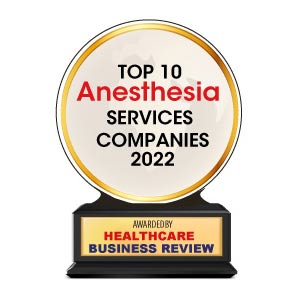Since its discovery in 1846, anesthetics have come a long way in terms of safety and efficacy with the advances in technology. Today, it aims at simplifying the anesthesia procedure for patients using non-invasive monitoring and robotic systems to prevent complications.
Considering the complications that can arise from inappropriate dosage, many hospitals have started shifting to using robots that ensure accurate anesthesia delivery. It is also complemented by noninvasive monitoring systems like wrist cuffs that provide real-time cardiac output and EEG to display the status; anesthesiologists can also administer the anesthesia level remotely.
Similar advances in the industry are expected to grow the global anesthesia drug market to reach $845 million by 2030, at a CAGR of 5 percent.
To put the spotlight on many key developments in the industry, Healthcare Business Review illustrates how the anesthesia industry is leveraging the latest developments. The edition also features thought leadership articles from Alison Havens, Director Patient Care Services, McLaren Health Care; Susan Brooks, Director of Patient Care Services, Catholic Health; and Ruben J. Azocar, Vice President for Perioperative Services at Beth Israel Deaconess Medical Center. They shed light on various challenges in perioperative care and overcoming them with the latest innovations.
In this edition of Healthcare Business Review, we also bring to you the story of some of the top anesthesia services companies that deliver the best outcomes for their clients. In the list, Anesthesia Management Services particularly stands out for their personalized care services and comprehensive consultation to optimize anesthesia operations. The list also comprises Excel Anesthesia for providing high-quality, cost-efficient and effective anesthesia services to hospitals and surgery centers.
Through the following pages, we aim to shine a light on the innovative trends and latest developments in the anesthesia services industry. We would like to know your thoughts.















